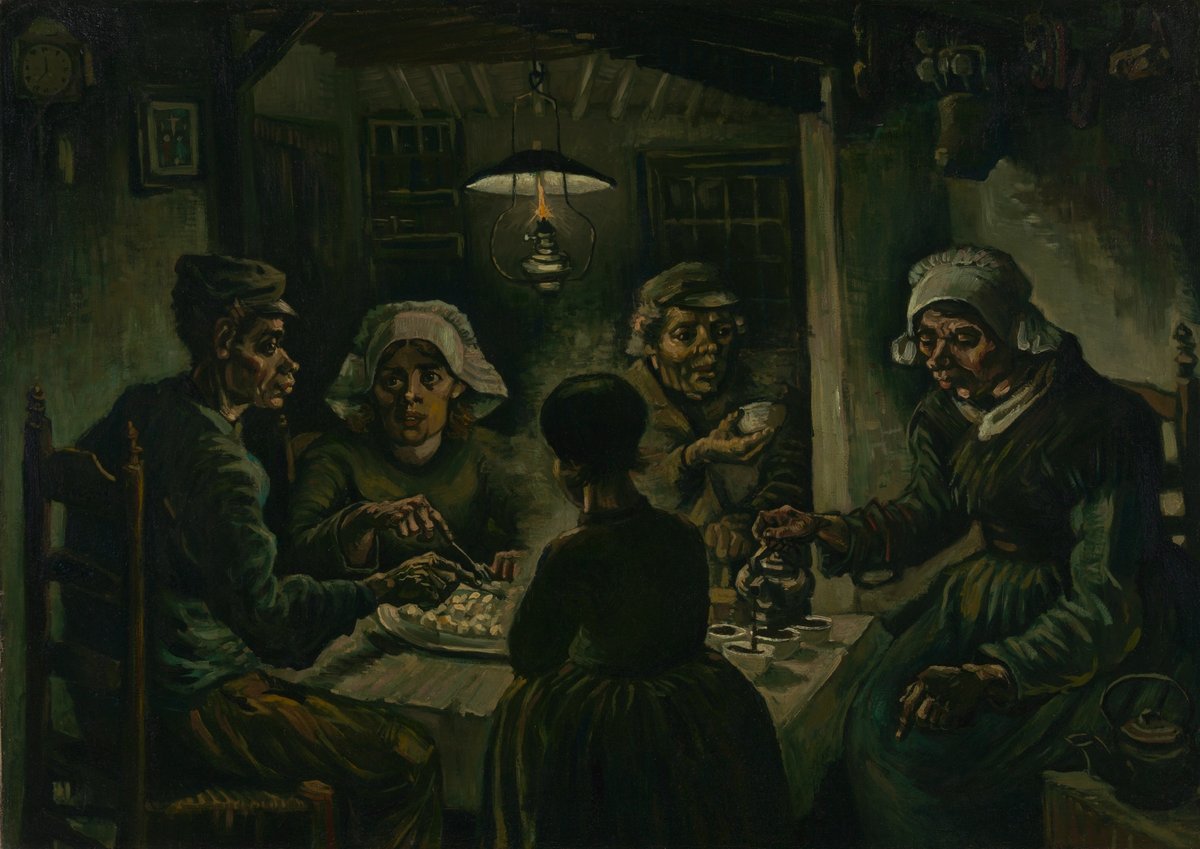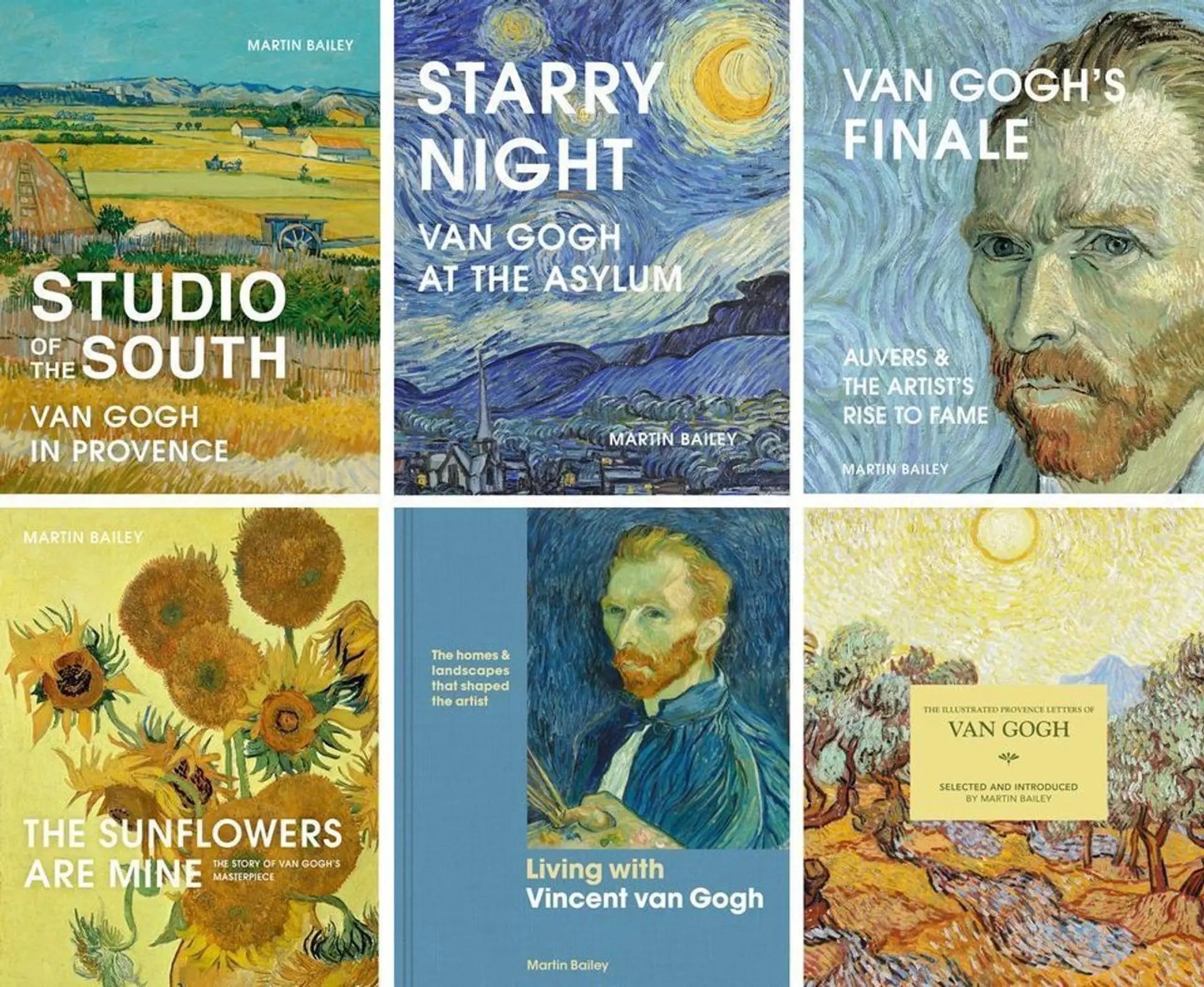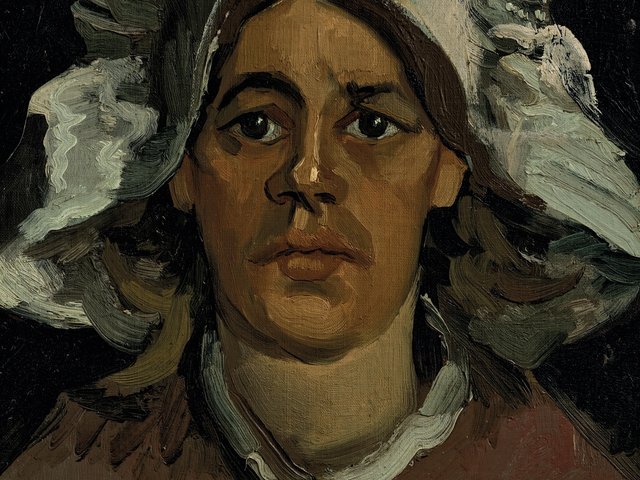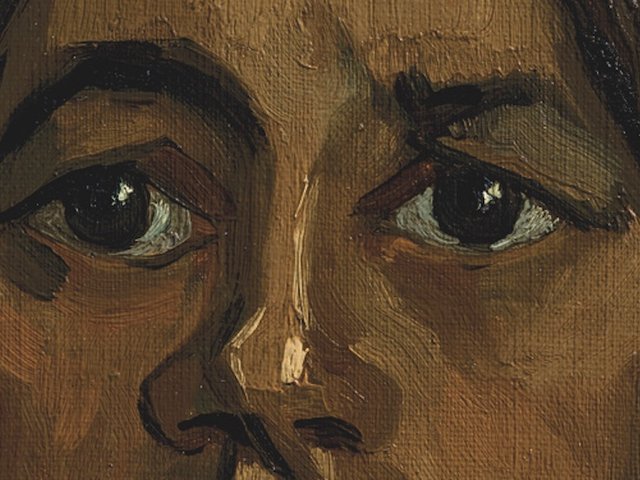The Van Gogh Museum is today opening its exhibition The Potato Eaters: Mistake or Masterpiece? (until 13 February). Vincent regarded the picture as his most successful early work. Two years later he wrote to his sister Wil: “The painting of the peasants eating potatoes that I did in Nuenen is after all the best thing I did.”
Few others agreed. Vincent’s friend Anthon van Rappard criticised a lithographed copy of The Potato Eaters, which led to an immediate break between them. Only Vincent’s loyal brother Theo had any confidence in the painting. Vincent asked him to approach several dealers to enquire whether they would consider buying the work. These included Thomas Wallis, who ran a gallery in London’s Pall Mall. None of them expressed the slightest interest in The Potato Eaters.
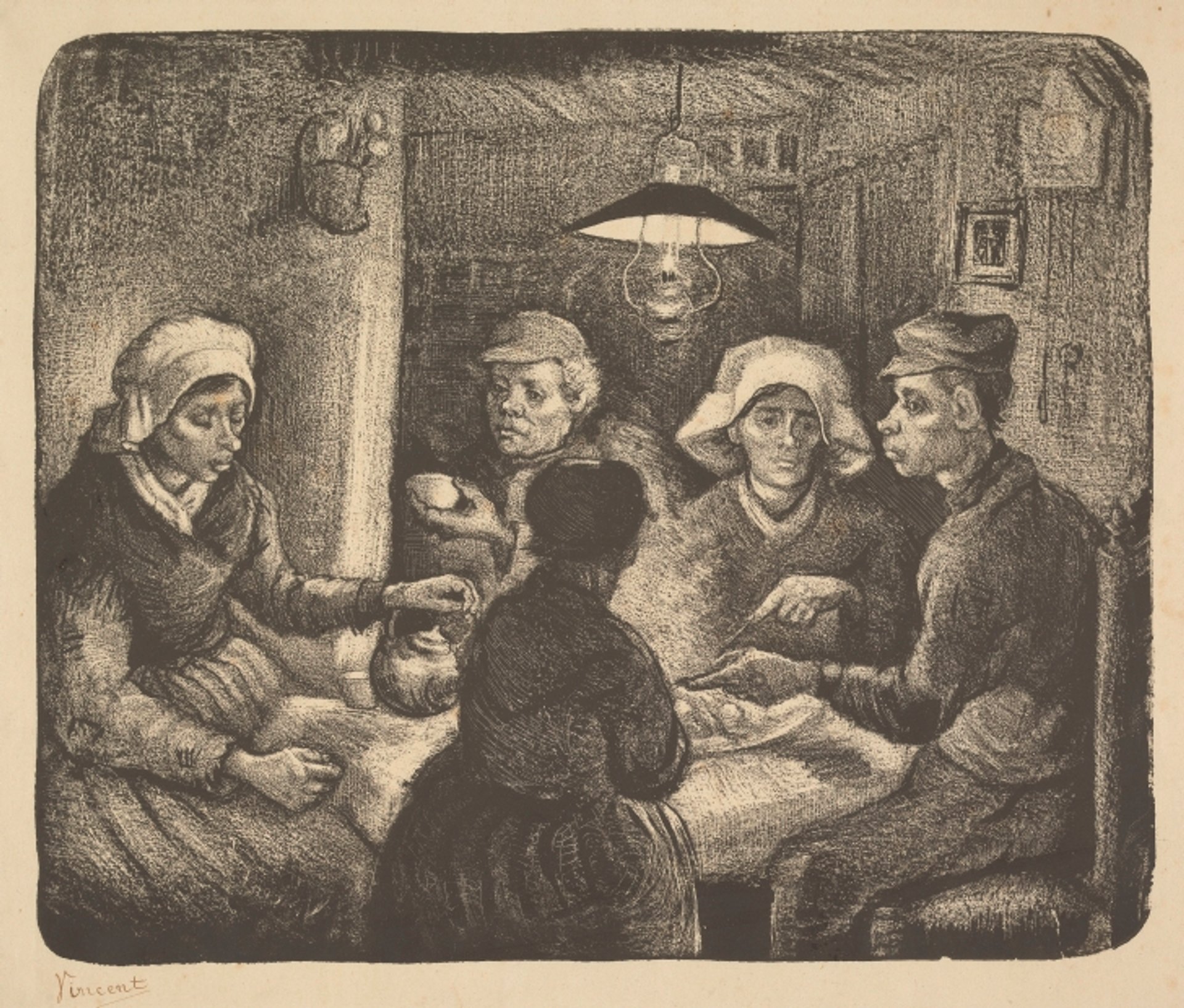
Van Gogh’s lithograph after The Potato Eaters (April 1885). Courtesy of the Van Gogh Museum, Amsterdam (Vincent van Gogh Foundation)
Van Gogh had put enormous effort into the project, following a winter of painting 40 head studies of individual Nuenen peasants. He then made preliminary sketches for details in The Potato Eaters, such as one of a hand holding a coffee bowl (for the man in the centre of the painting). This drawing included a cat, which suggests that he may have been considering a feline presence near the dining table—although this idea was dropped.
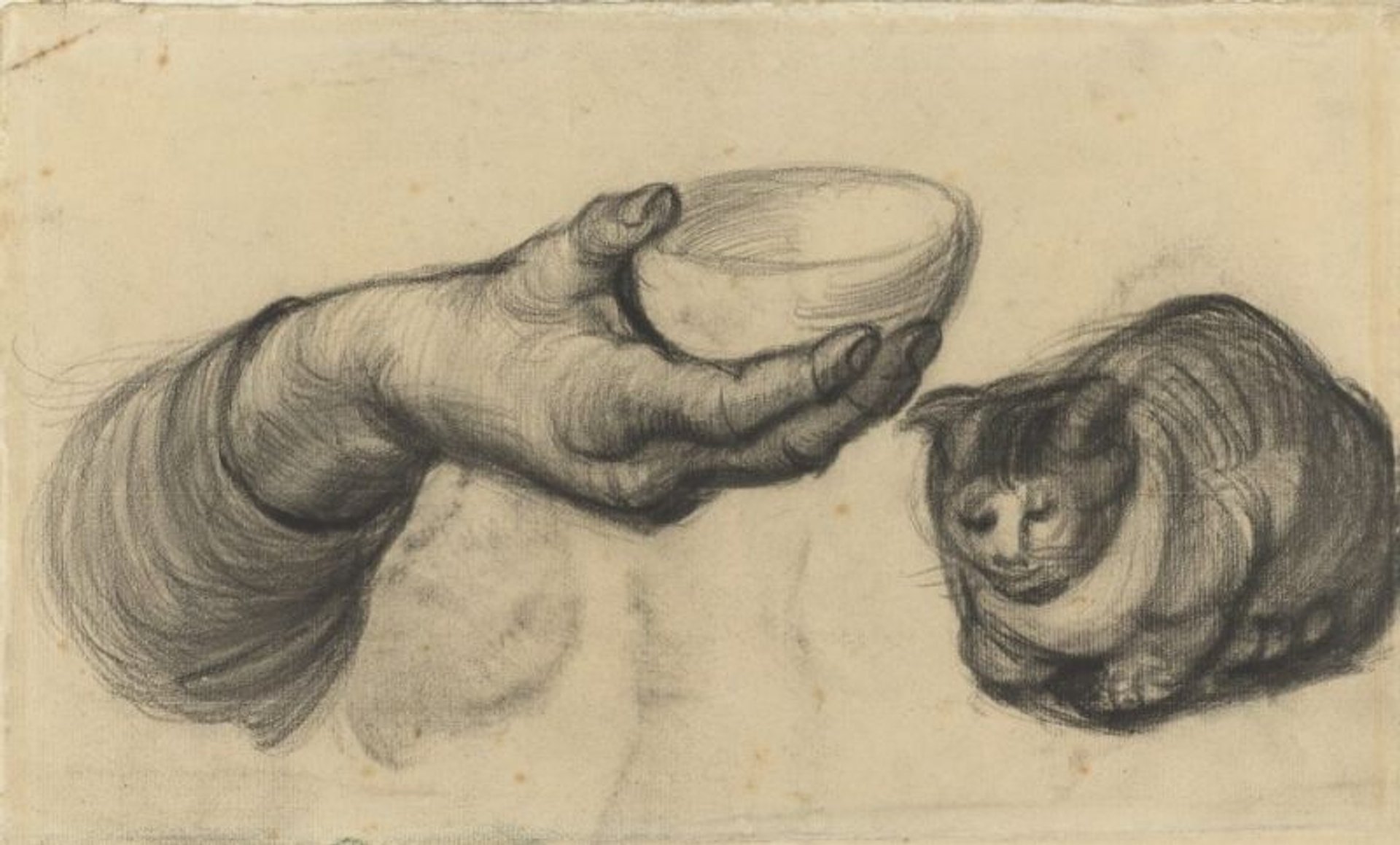
Van Gogh’s Hand with a Bowl, and a Cat (March-April 1885). Courtesy of the Van Gogh Museum, Amsterdam (Vincent van Gogh Foundation)
Vincent went on to make a pencil sketch of the entire composition, followed by a rough oil sketch and finally a full-size oil study. Although the pencil and oil sketches will be in the exhibition, the oil study was not available to borrow. The full-size oil study belongs to the Kröller-Müller Museum in Otterlo, where it one of the most popular works—and visitors expect to see it there.
Vincent completed the final painting—the centrepiece of the Mistake or Masterpiece? exhibition—at the very beginning of May 1885. Five family members are assembled around the table in their dark cottage, sharing their food under an oil lamp. It is an evening meal, with the clock in the upper-left corner at "7" (this is difficult to make out in reproductions).
The family have rough, weather-beaten faces and large, bony hands—Van Gogh’s way of emphasising that they are hard-working rural labourers. Only one person can be positively identified, the woman facing us on the left side: Gordina de Groot. She appears in several paintings, including Head of a Woman (March 1885). The others around the dining table are likely to be fellow members of the De Groot-van Rooij family.
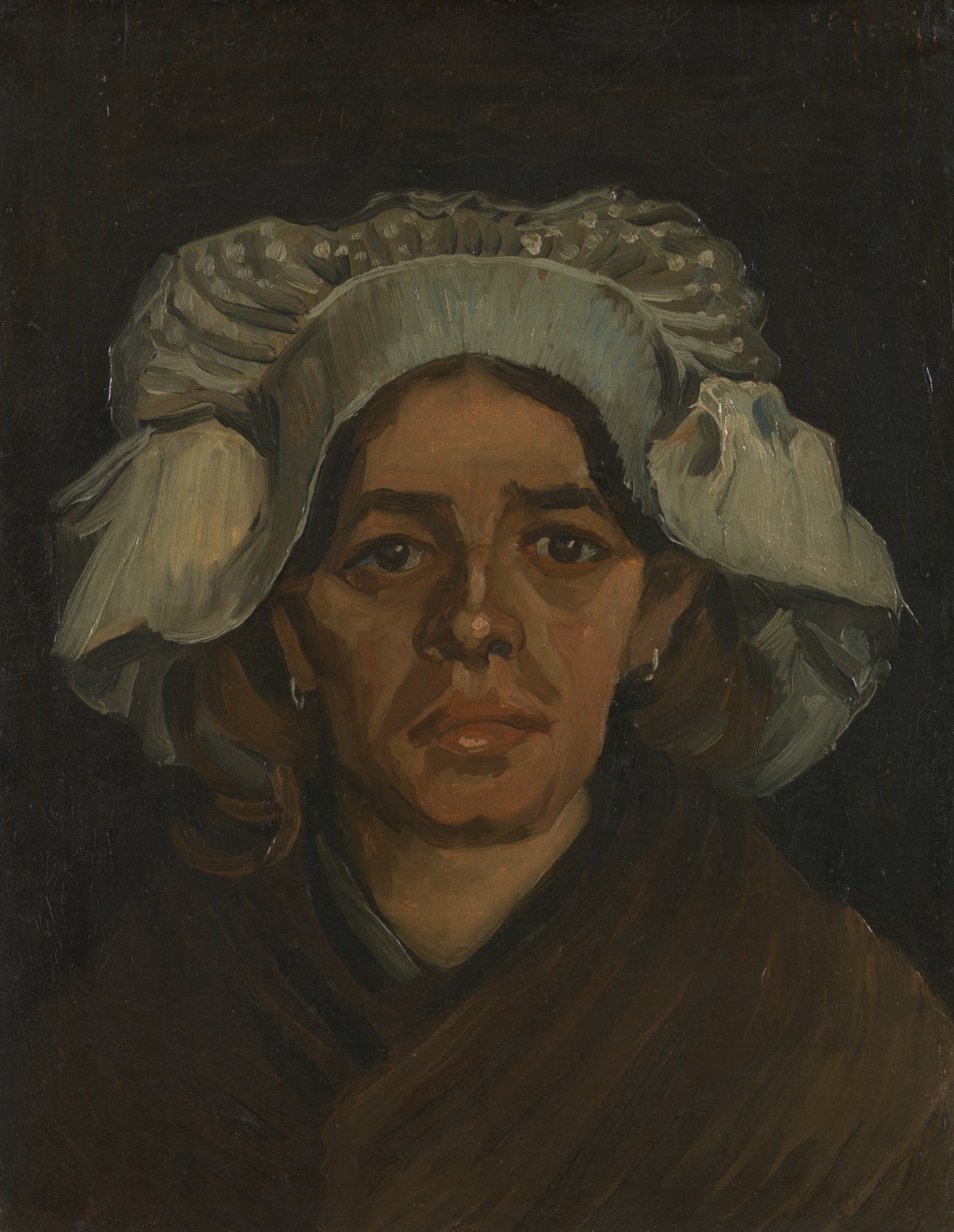
Van Gogh’s Head of a Woman (Gordina de Groot) (March 1885). Courtesy of the Van Gogh Museum, Amsterdam (Vincent van Gogh Foundation)
A few months later there were rumours in Nuenen that Vincent was having an affair with Gordina, who was then 30. Although unmarried, she had become pregnant and the local Catholic priest suggested that the artist was responsible. Vincent vigorously denied this, as he told Theo: “A girl I’d often painted was having a child and they thought it was mine, although it wasn’t me.” He complained to the mayor that it was actually a member of the priest’s congregation who had got Gordina pregnant. The storm eventually blew over, but it made it more difficult for Vincent to get models.
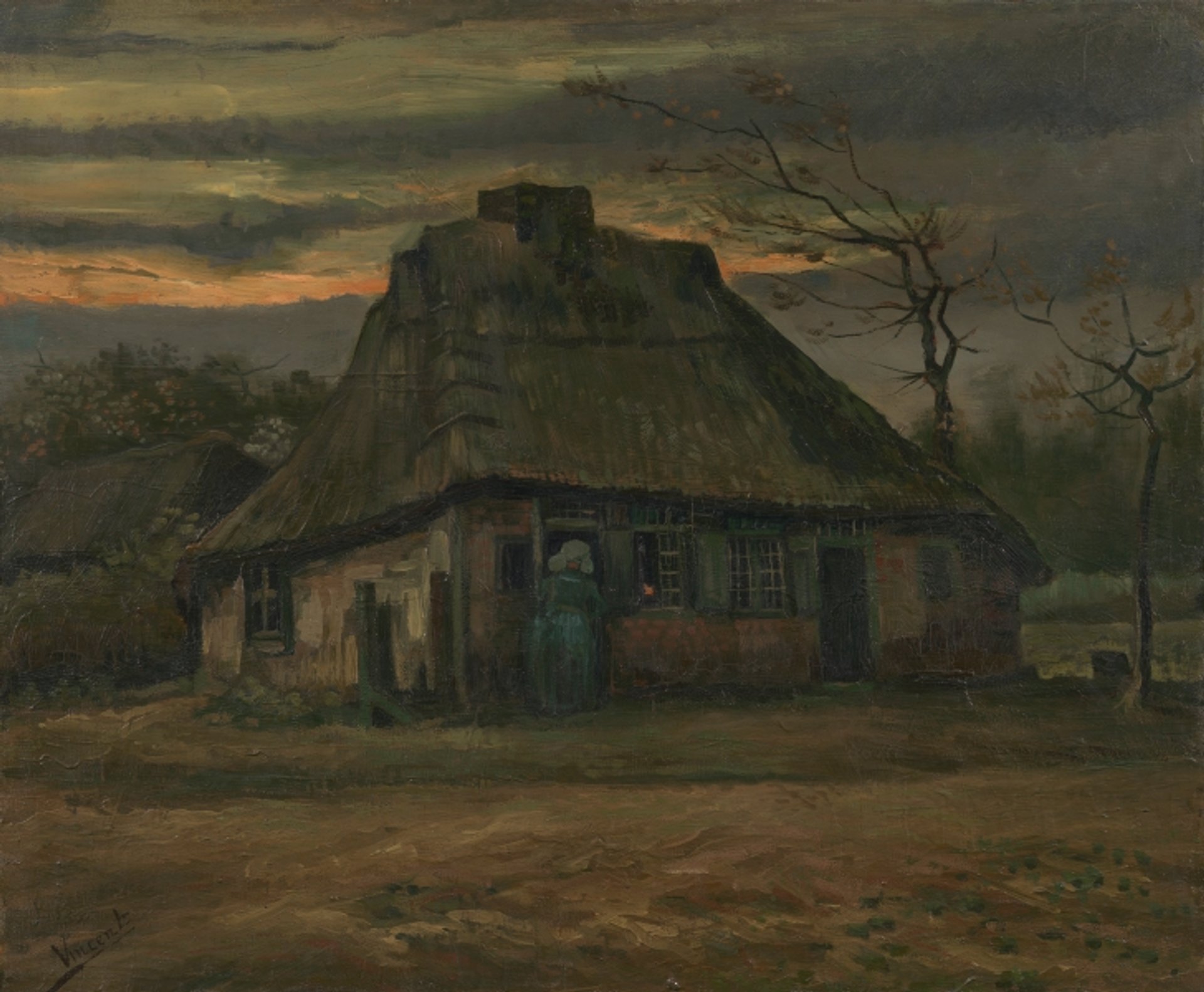
Van Gogh’s The Cottage (May 1885). Courtesy of the Van Gogh Museum, Amsterdam (Vincent van Gogh Foundation)
The interior of the hut of Gordina’s family is traditionally said to have been recorded in a photograph published in 1926, at which point it was very dilapidated. Van Gogh also depicted a twilight view of its exterior in The Cottage (May 1885). In The Cottage a woman, with a cap like Gordina’s, stands just outside and a welcoming hearth can just be seen through a window. The building was demolished during the Second World War and a replacement built in the 1950s (its street address is 4 Gerwenseweg).
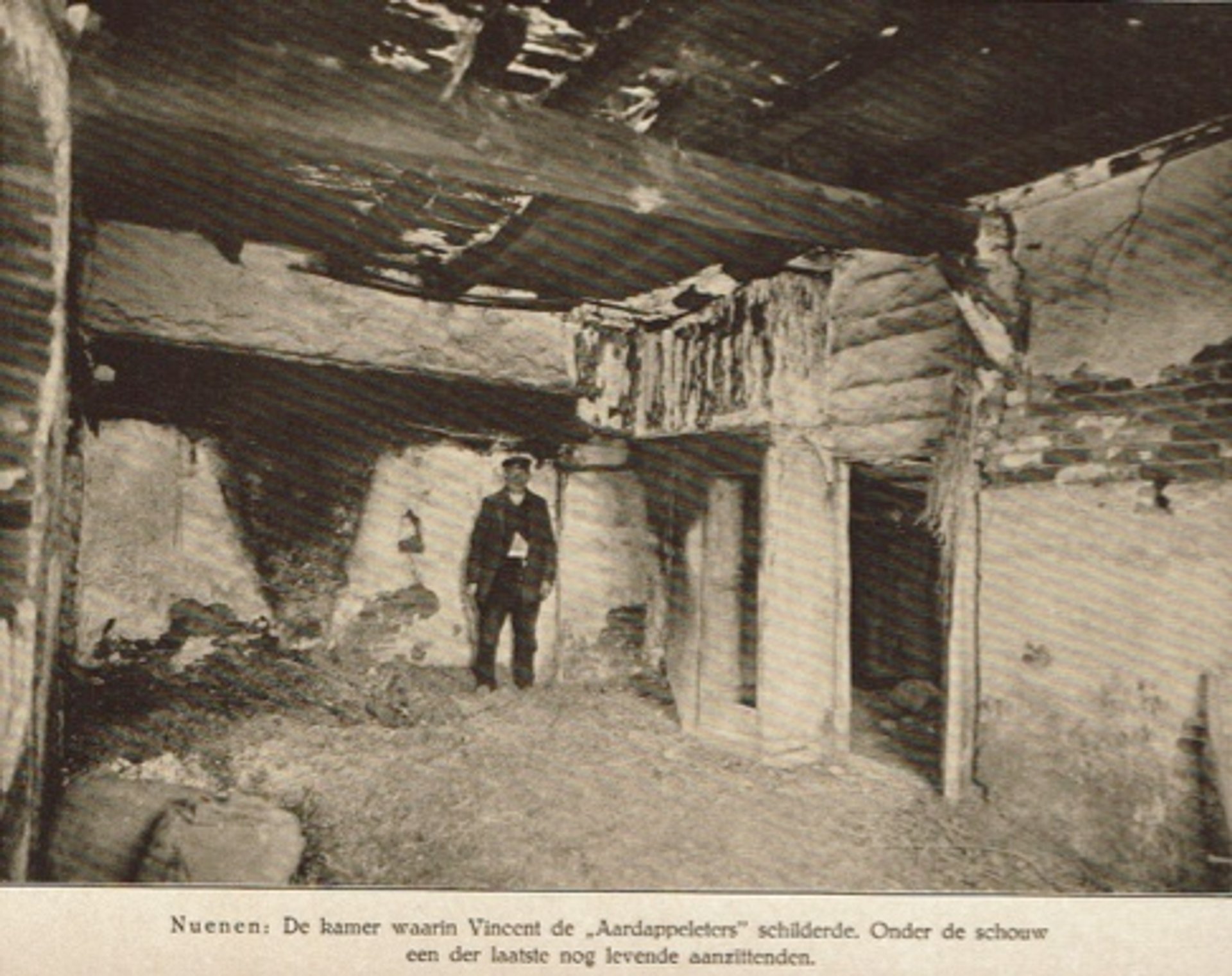
Photograph of what is traditionally said to be the former house of Gordina’s family, home of the potato eaters, published in the book Benno Stokvis, Nasporingen omtrent Vincent van Gogh in Brabant, 1926
Theo, who admired The Potato Eaters, hung the painting above the fireplace in his Parisian apartment. After his death, his widow Jo Bonger kept it in her dining room every time she moved. From 1917-20 it was among several key Van Gogh paintings that she lent to the Rijksmuseum in Amsterdam.
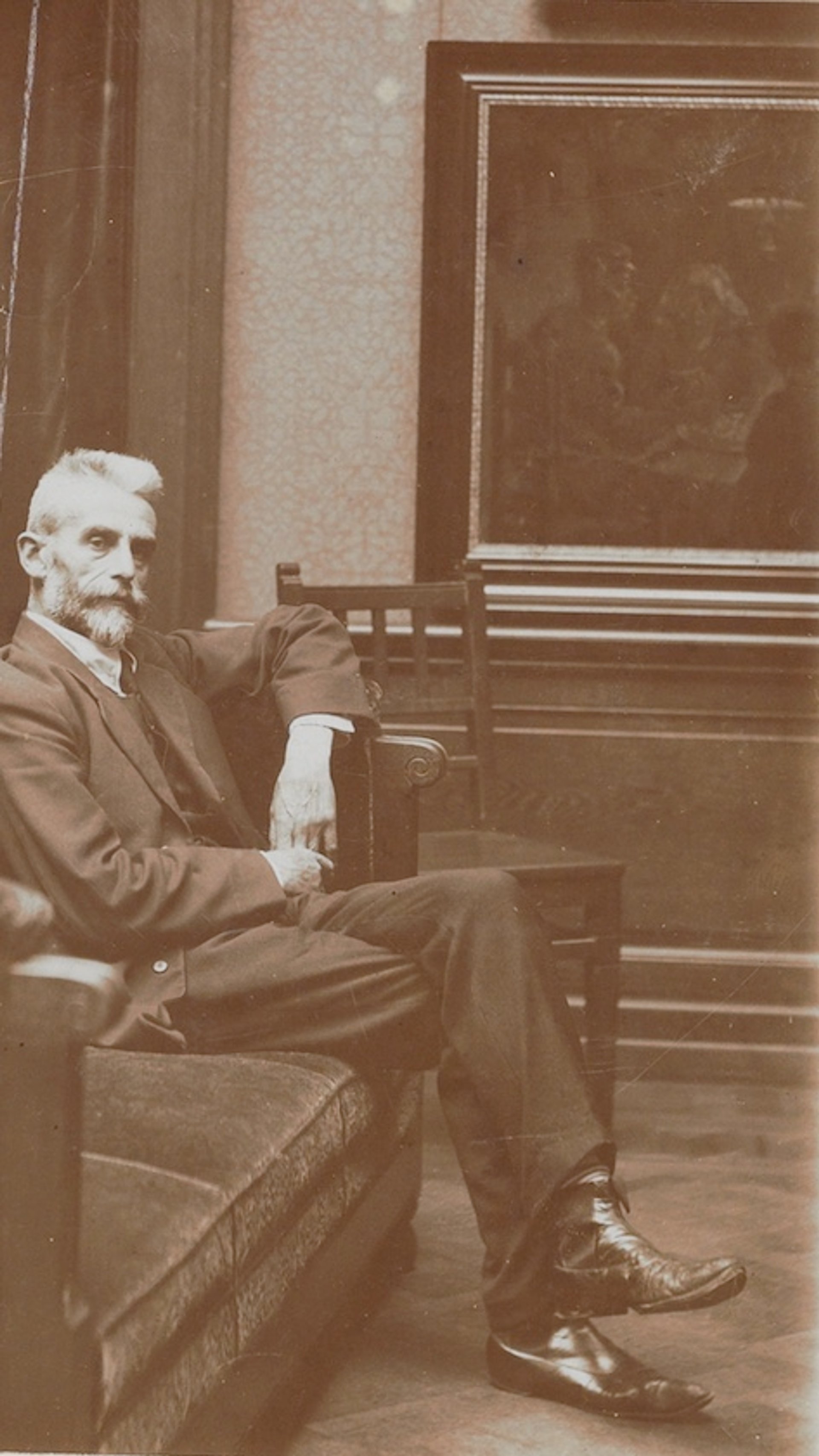
Willem Steenhoff, the paintings director at the Rijksmuseum, seated next to The Potato Eaters, in about 1918. Courtesy of the Van Gogh Museum archive, Amsterdam
Johan van Gogh, the grandson of Theo and Jo, recalled meals under The Potato Eaters. For him, the painting epitomised the pleasure shared by a family gathered together around the table at the end of a day’s work. However, not all visitors liked the picture, and one friend would always sit where he could avoid seeing it. In 1973 The Potato Eaters, along with the rest of the family’s art collection, went to the newly established Van Gogh Museum.
The Potato Eaters: Mistake or Masterpiece?, organised by the curator Bregje Gerritse, includes 24 Van Gogh works on paper and 21 paintings. They all belong to the Amsterdam museum, apart from a portrait of a male peasant, which comes from the Royal Museums of Fine Arts of Belgium. With very few outside loans, it is an ideal show to present as the Netherlands emerges from Covid-19—when international loans are logistically complicated and ticket revenue from visitors remains down. But although relatively modest in scope, a Van Gogh exhibition focussed around a single painting provides a deep insight into his work.
And was the painting a mistake or a masterpiece? Van Gogh himself liked the concept of it, even if he became dissatisfied with its execution. In April 1890, five years later when he was at the asylum outside Saint-Rémy-de-Provence, he considered making a new version of The Potato Eaters. Vincent wrote to Theo: “I’m thinking of redoing the painting of the peasants eating supper, lamplight effect.” But although he made a few associated rough sketches, nothing came of a new version of the painting.
Today we have mixed feelings about The Potato Eaters, with its gloomy colours. Vincent’s dark tones were deliberate and, as as he told his brother, he was aiming for “the colour of a really dusty potato, unpeeled of course”. But his colours have darkened very considerably and the painting now needs to be viewed under strong lighting (and it does not reproduce well).
In compositional terms, the figures around the table appear as a series of individuals, rather than as a coherent and interacting group. For us today, a disconcerting aspect of the picture is the caricatured depiction of the peasants—reflecting attitudes of the artist’s time.
But in spite of these problems, the painting retains great power. One can feel Van Gogh’s determination to capture the challenging life of the peasants—and to stress the importance of family links. As Vincent explained to Theo, in The Potato Eaters he was emulating his artistic hero Jean-François Millet, who used earthy tones to paint peasants “with the soil they sow”.
Other Van Gogh news
• Next week the Musée d’Orsay in Paris will open a fascinating exhibition on the art collection amassed by the Neo-Impressionist artist Paul Signac. Works on show include Van Gogh’s Two Herrings (private collection), which Vincent gave to his friend in March 1889 while he was recovering from having mutilated his ear. Signac Collectionneur (12 October-13 February 2022) is organised by Marina Ferretti (Musée des Impressionnismes Giverny) and Charlotte Hellman (great-granddaughter of the artist and Signac archivist).


